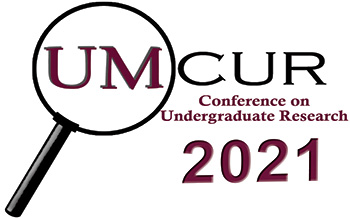Project Type
Presentation
Faculty Mentor’s Full Name
Ekaterina Voronina
Faculty Mentor’s Department
Department of Biological Science
Abstract / Artist's Statement
Alzheimer’s is a neurodegenerative disease that affects millions of people the world over. This is a growing problem, especially in developed countries where people are living longer. Over time, more and more young people will be tasked with taking care of their elderly family members, who can no longer take care of themselves. The causes leading up to the disease are still poorly understood, but by looking at certain genes that are associated with Alzheimer’s, we can gain a better understanding of the disease and the pathways that lead to it. Luckily, humans share lots of their genes with other animals, including about 50% with Caenorhabditis elegans, a type of nematode. We can easily do experiments on C. elegans that would be impossible in humans. In my research, I am using RNA interference to knock out 4 genes associated with Alzheimer’s in the worms; abt-2, abt-4, abt-5, and sel-12. There has been little or no research done on these genes. By observing the worms under these conditions, we can make inferences on the function of the genes that were knocked down, and deduce their function in humans, including where they fit in the Alzheimer's pathway. Gaining a better understanding of the pathway in worms and humans will allow us to better focus future research, possibly finding areas to be targeted by drugs, or even discovering a cure.
Category
Life Sciences
Video Presentation
Using C. elegans as a Model Organism to Study Genes linked to Alzheimer’s
Alzheimer’s is a neurodegenerative disease that affects millions of people the world over. This is a growing problem, especially in developed countries where people are living longer. Over time, more and more young people will be tasked with taking care of their elderly family members, who can no longer take care of themselves. The causes leading up to the disease are still poorly understood, but by looking at certain genes that are associated with Alzheimer’s, we can gain a better understanding of the disease and the pathways that lead to it. Luckily, humans share lots of their genes with other animals, including about 50% with Caenorhabditis elegans, a type of nematode. We can easily do experiments on C. elegans that would be impossible in humans. In my research, I am using RNA interference to knock out 4 genes associated with Alzheimer’s in the worms; abt-2, abt-4, abt-5, and sel-12. There has been little or no research done on these genes. By observing the worms under these conditions, we can make inferences on the function of the genes that were knocked down, and deduce their function in humans, including where they fit in the Alzheimer's pathway. Gaining a better understanding of the pathway in worms and humans will allow us to better focus future research, possibly finding areas to be targeted by drugs, or even discovering a cure.
